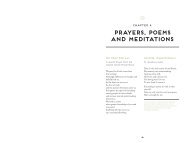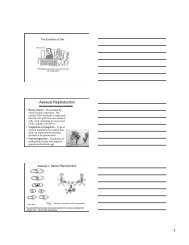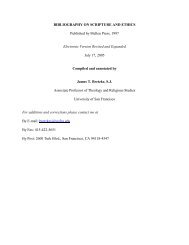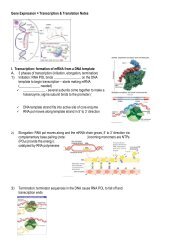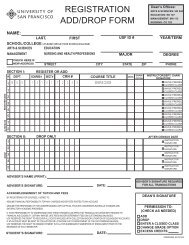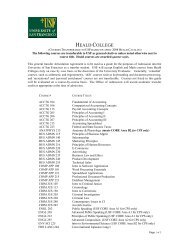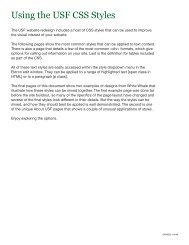Population Genetics I. What is Population Genetics
Population Genetics I. What is Population Genetics
Population Genetics I. What is Population Genetics
Create successful ePaper yourself
Turn your PDF publications into a flip-book with our unique Google optimized e-Paper software.
Gene Frequencies & Allele Frequencies<br />
• Gene frequency refers to proportion of particular allelic<br />
form among all copies of gene in population<br />
• Usually estimated by sampling population<br />
– diploid: 2 copies of gene<br />
• homozygotes: 2 copies of allele<br />
• heterozygotes: 1copy of each allele<br />
– haploid: 1 copy of allele<br />
• For two alleles, p + q = 1, where p and q are frequencies<br />
of the two alleles<br />
Calculating Genotype Frequencies<br />
Relative frequencies of genotypes – proportion of organ<strong>is</strong>ms<br />
that have the particular genotype<br />
• The proportion of individuals<br />
in a population with a<br />
particular genotype<br />
• fA/A =<br />
• fA/a =<br />
• fa/a =<br />
N<br />
f<br />
A/A<br />
40<br />
0.40<br />
A/a<br />
47<br />
0.47<br />
a/a<br />
13<br />
0.13<br />
Calculating allele frequencies<br />
• If fA/A, and fa/a are the proportions of the<br />
three genotypes at a locus with two<br />
alleles, then the frequency p(A) of the A<br />
allele and the frequency q(a) of the a allele<br />
are obtained by counting alleles:<br />
• p = fA/A + ½ fA/a<br />
• q = fa/a + ½ fA/a<br />
• p + q = fA/A + fa/a + fA/a = 1.00<br />
• q = 1 – p and p = 1 – q<br />
2



